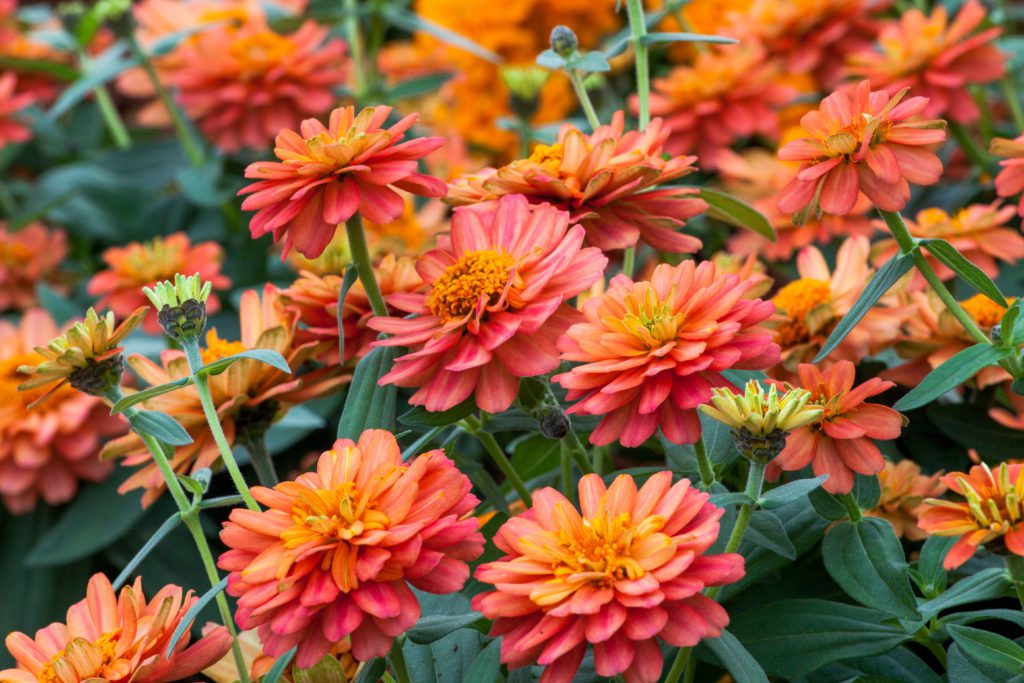Deep Salmon Profusion Zinnia: A Guide to Growing and Caring for This Stunning Flower
In gardening, few flowers can rival the vibrant charm and effortless beauty of profusion zinnias. These captivating blooms, known for their profusion of colors and shapes, have become a staple in gardens worldwide. Whether you’re a seasoned gardener or just starting, this comprehensive guide will empower you to successfully cultivate and care for profusion zinnias, transforming your outdoor space into a mesmerizing display of floral splendor. From planting techniques and growth tips to managing common pests and diseases, this blog post is your ultimate resource for nurturing these stunning flowers.
Planting profusion zinnias: a step-by-step guide
Profusion zinnias, with their captivating blooms and vibrant hues, are a gardener’s delight. To ensure their successful growth and stunning display, providing them with the right conditions and care is essential. Planting profusion zinnias is a simple and rewarding process that can be broken down into a few easy steps.
The first step is to choose the right time for planting. Profusion zinnias thrive in warm weather, so it’s best to plant them in the spring after the last frost date has passed. This will give the plants enough time to establish themselves before the summer heat sets in.
Next, select a suitable location for your Deep Salmon profusion zinnias. These flowers prefer full sun, meaning they need at least six hours of direct sunlight daily. They also require well-drained soil to prevent root rot. If your soil is heavy or compacted, you may need to amend it with compost or other organic matter to improve drainage.
Once you’ve chosen the perfect spot, it’s time to plant the seeds. Profusion zinnias are direct-seeded flowers that can be planted directly into the garden soil. Sow the seeds 1/4 inch deep and 12 inches apart. Keep the soil moist until the seeds germinate, which typically takes 7-10 days.
With these simple steps, you’re well on your way to growing a profusion of zinnias that will add beauty and charm to your garden. In the following sections, we’ll explore additional care tips, including watering, fertilizing, and managing common pests and diseases, to ensure your Deep Salmon profusion zinnias thrive and flourish throughout the growing season.
Profusion zinnia care: tips for healthy growth
Profusion zinnias are relatively easy to care for, but there are a few things you can do to ensure healthy growth and abundant blooms.
**Watering**
Profusion zinnias need regular watering, especially during hot and dry weather. Water the plants deeply once or twice a week, or more often if the soil is sandy or the weather is extremely hot. Avoid overhead watering, as this can lead to fungal diseases.
**Fertilizing**
Profusion zinnias benefit from regular fertilization. Fertilize the plants every four to six weeks with a balanced fertilizer, such as a 10-10-10 fertilizer. Avoid over-fertilizing, as this can lead to leggy growth and fewer blooms.
**Deadheading**
Deadheading, or removing spent flowers, encourages profusion zinnias to produce more blooms. Deadhead the plants regularly by pinching off the spent flowers at the base of the stem.
**Pinching back**
Pinching back the stems of profusion zinnias encourages bushier growth and more blooms. Pinch back the stems by removing the top 1-2 inches of growth. Pinch back the plants when they are about 6 inches tall.
Common pests and diseases of profusion zinnias
Deep Salmon Profusion zinnias are susceptible to a few common pests and diseases that can affect their growth and appearance. Aphids and spider mites are two of the most common pests that can infest profusion zinnias. Aphids are small, green insects that feed on the sap of plants, causing leaves to curl and turn yellow. Spider mites are tiny, red, or brown mites that spin webs on the undersides of leaves, causing them to turn yellow and drop off. Both aphids and spider mites can be controlled with insecticidal soap or neem oil.
Powdery mildew is a common fungal disease that can affect profusion zinnias. Powdery mildew causes a white powdery growth on the leaves and stems of plants, which can stunt growth and reduce yields. Powdery mildew can be controlled with a fungicide or by spraying plants with a mixture of one part milk and nine parts water.
Keeping the plants healthy and vigorous is essential to prevent pests and diseases from affecting profusion zinnias. This can be done by providing them with the proper growing conditions, such as full sun, well-drained soil, and regular watering. Inspecting plants regularly for signs of pests or diseases and taking steps to control them as soon as possible is also essential.
Following these tips can help profusion zinnias thrive and produce beautiful blooms all season long.



Reviews
There are no reviews yet.